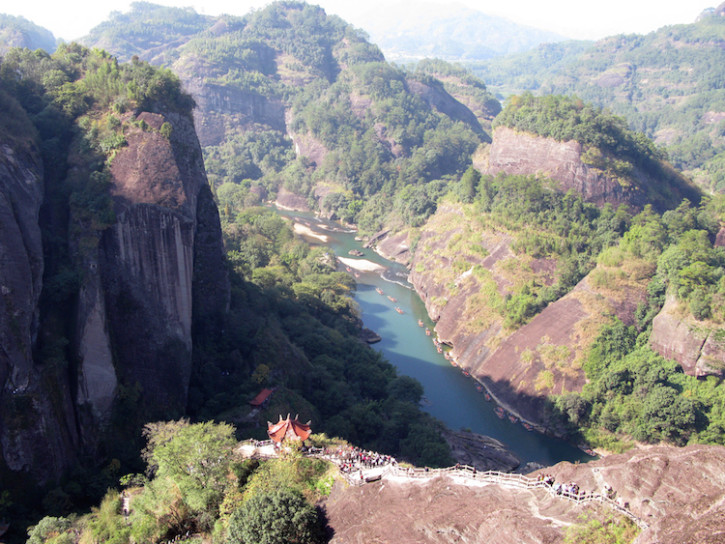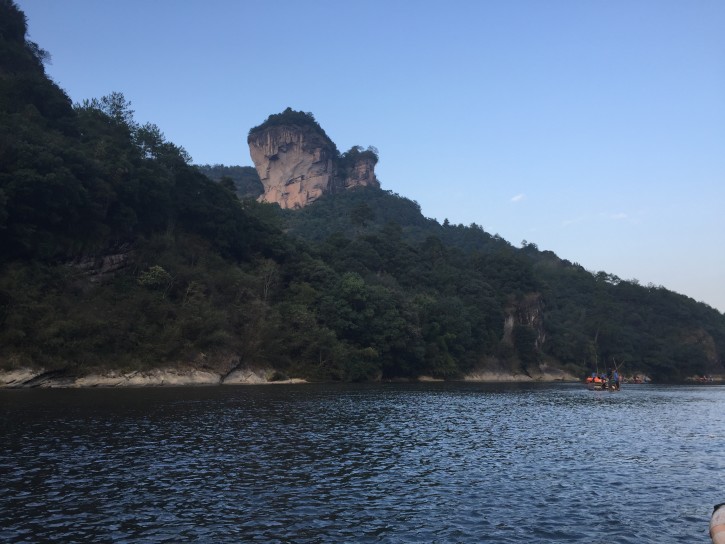By Chelsea Eakin

On a recent gorgeous Sunday in the mountainous region of Wuyishan, Fujian, officials from all levels of government, including a vice governor of the province, the party secretary of the prefecture and the mayor of Wuyishan city, as well as managers of the area’s nature reserve, scenic area and cultural heritage site were not outside. Instead, they spent the day packed in a conference room for a workshop organized by the Paulson Institute and Heren Foundation to discuss how to structure and implement the area’s pilot national park.
More than 70 local participants came to engage with international and Chinese parks experts on what to consider when planning their pilot national park – one of nine sites chosen in February 2015 by the National Development and Reform Commission (NDRC), which is leading the initiative. The workshop was part of the Paulson Institute’s collaboration with China’s NDRC and the Heren Foundation to help establish a national park system.
The project supports China’s broader plan to develop an “ecological civilization,” following decades of rapid economic development across the country with little concern for conservation. In recent years, many of China’s natural areas have been either destroyed by massive industrial development and urbanization or inundated with tourists, whose sheer numbers can threaten ecosystems and detract from the natural beauty. As the central government steers development to a more environmentally sustainable economic model, it is also stepping up efforts to protect the country’s natural environment.
But there are enormous challenges, from the need to hit local economic targets to corruption and ineffective, uncoordinated management at the central government level, insufficient funding and staff capacity. At present, China has thousands of protected areas, including nature reserves, scenic areas, world heritage sites, forest parks and geological parks, covering about 18% of China’s total land territory, above the world’s average. But due to overlapping and sometimes conflicting management authority and inadequate laws and implementation, the protected areas are not sufficiently safeguarding China’s rich and unique biodiversity and critical ecosystems. The Paulson Institute is supporting China’s efforts to improve the situation.

The focus of the Institute’s initial work on national parks is in Wuyishan, whose mountain forests possess the richest biodiversity in both plants and wildlife in Southeast China. The region also represents many of the most critical challenges and opportunities that China’s protected areas face today — from the dangers of over-commercialization and the importance of balancing protection with the economic needs of the local communities to the opportunity to consolidate various protected areas managed by different government agencies.
In their presentations, four international experts from the U.S. and Brazil invited by the Paulson Institute stressed training and institutional guidance, the importance of consistent management across all national parks, and effective engagement with local communities near national parks. The experts all emphasized that local partnerships can help ensure the success of national parks.
Lynn Scarlett, former Chief Operating Officer and Deputy Secretary of the Interior and current Managing Director of Public Policy at the Nature Conservancy, also noted that the oversight and coordination by the federal government encourages seamlessness in the U.S. parks system: “We have a single national recreation pass and if you purchase that pass, you can go to a park, refuge, forest trail, all with the single pass.”
As a way to message consistency and professionalism, even the uniform worn by U.S. parks employees is important, according to Destry Jarvis, former Presidential Appointee to the US National Parks Service and current board member at Global Parks, “for the public to understand visually they are in a special place, with a certain set of rules that don’t apply in other places.”
Representing the perspective of a developing nation, Sergio Brant Rocha, Director of the Chico Mendes Institute for Biodiversity Conservation, stressed the importance of capacity building and training. “In Brazil, we are facing situations and problems that are the same that you will face in the near future,” Rocha said. “For the U.S. some things are very easy, because they are old in terms of institutions, their standards are already set, they have complete manuals… We don’t. And you are going to see the same situation.” Training sessions for new parks employees, he said, have been very valuable in Brazil.
The question of which government entity will ultimately manage the new national parks system remains to be worked out. But high-level design and funding from the central government are crucial to establishing an effective national parks system, said Yang Rui, Assistant Professor of Landscape Architecture at Tsinghua University and one of China’s leading experts on cultural and natural heritage conservation. “This is fundamental to success,” he said.





